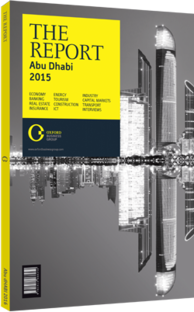Efforts to conserve ecological space go hand-in-hand with urban planning
To protect key habitats and species from the impact of rapid development, the authorities have designated some parts of the emirate as special protected areas under a programme that is managed by the Environment Agency - Abu Dhabi (EAD). There are currently six main such areas, divided between three terrestrial protected areas (TPA) and three marine protected areas (MPA), in which fishing is restricted or banned, as well as a number of smaller areas.
Protected Areas
The major TPAs are the Al Wathba Wetland Reserve, which was the first area to be given protected status in the emirate; the Um Al Zamoul Protected Area, which is 7904 km sq in size and is home to around 4000 heads of Arabian oryx; and the Houbara TPA, a 769-sq-km zone home to a captive breeding programme for the Asian houbara bustard. Among the main MPAs are the Marawah Marine Biosphere Reserve, a 4255-sq-km zone that houses coral reefs, mangroves and sand flats, as well as threatened species such as the green turtle and the emirate’s dugong population; the Al Yasat MPA, a 2046-sq-km area near the marine border with Saudi Arabia whose coral reefs provide a habitat for the critically endangered hawksbill turtle; and the 282-sq-km Bul Syayeef MPA, which hosts a large number of both resident and migratory birds. Of these areas, only Marawah and Al Yasat have been ratified by emiri decree as fully protected areas, while the other four are classified as “protected areas awaiting decree”. However, in May 2014 the EAD said that work was under way for the four areas in question to be formally recognised in the near future. As of the end of 2013 the EAD classified 14.6% of Abu Dhabi’s land area and 13.5% of its waters as protected territories, including areas where that status has not yet been ratified by decree. The Abu Dhabi Environment Vision 2030 aims to bring the proportion of terrestrial nature reserves up to 17% of territory, in line with targets specified by the UN Convention on Biological Diversity. The agency uses International Union for Conservation of Nature criteria for selecting protected areas, not all of which completely bar development. “There are different levels of protection – for example, some protected areas can accommodate ecotourism and others can co-exist with development under the right conditions,” Shaikha Salem Al Dhaheri, executive director for terrestrial and marine biodiversity at the EAD, said.
Conservation Programme
The EAD continues to work on identifying potential areas for protection. Among these are the newly designated Mangrove National Park on the eastern coast of Abu Dhabi City. While the park is not currently a protected area, the agency has said that it may qualify for classification as such in the future as a result of the ecological importance of mangrove forests. “Mangroves are important for stabilising and protecting the coast, as well as being economically important, as many crustaceans and fish start their life in mangrove forests. They also act as refuges for many bird types,” Al Dhaheri said.
The EAD has established a programme for conserving mangroves and is planting 2m saplings in areas that previously hosted them. However, Al Dhaheri said that conservation of existing trees was preferable to having to replant forests, as it can take 20 to 25 years for saplings to mature. Simon Pearson, senior advisor at the EAD, added that the species also help the emirate meet other environmental goals by, for example, acting to absorb carbon and other pollutants from the air. The EAD has also been working with the Urban Planning Council and other entities on revising the master plan for Abu Dhabi City’s urban development, known as Plan Capital 2030. Under this plan, it has proposed the designation of a number of environmentally sensitive areas (where development will be limited) and conservation zones (which will be fully protected from development), in particular in coastal areas and on the emirate’s islands. “We’re trying to find the right balance between urban development and protecting natural systems,” said Pearson. “Coastal zones are very desirable for development, but in many cases they are also the most biodiverse areas in the emirate,” he told OBG.
You have reached the limit of premium articles you can view for free.
Choose from the options below to purchase print or digital editions of our Reports. You can also purchase a website subscription giving you unlimited access to all of our Reports online for 12 months.
If you have already purchased this Report or have a website subscription, please login to continue.

